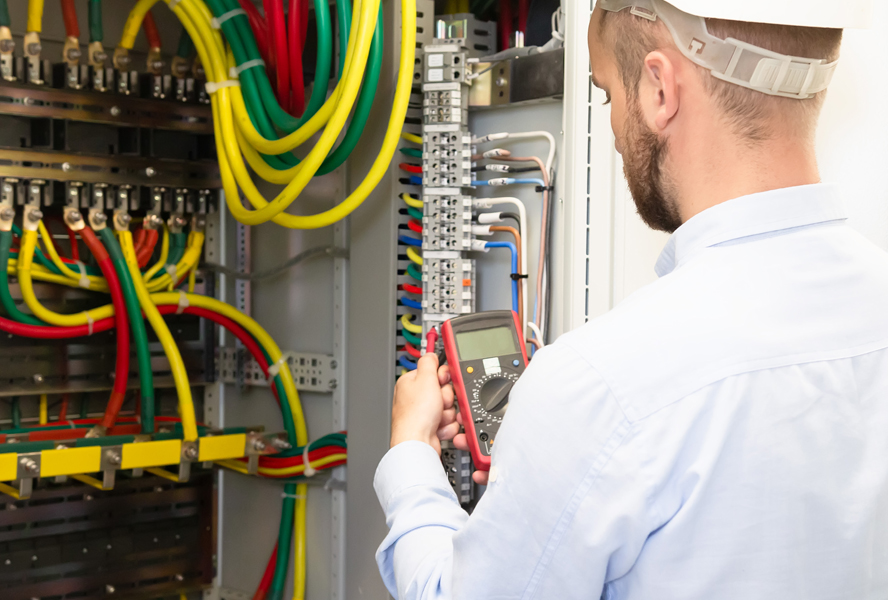In recent times, due to the absence of appropriate training and basic science procedures, building envelope thermography inspection services have not been properly applied in building assessment. Thermography was commonly used as a method for the determination of building efficiency during the late 1970s and early 1980s when fuel prices were increasing significantly. For effective supervision, it is quickly necessary to test and evaluate the efficiency of a building envelope of the residential and commercial architectures of the world.

The only validated technique for detecting moisture and power depletion is infrared thermography. Discover bad areas inside your plant, reduce running costs and make maintenance work more effective, and minimize greenhouse emissions.
The proper application and use of EHS thermal imaging green building UAE inspections save substantial money for property owners and investors. Proper investing in a Performance Assessment for Infrared Buildings will guarantee the structural stability and protection of commercial or residential structures. They could also be used to guarantee that insulation is correctly configured as a tool for quality management.
It is performed on:
Home – As it immediately displays where the heat loss takes place in a comprehensive visual picture to help create a happier life and to reduce the cost of energy.
Commercial buildings – In order to determine their building credibility along with an air adsorption test, some customer’s buildings need infrared thermography.
How Is It Done?
The heat loss of structures has been increased by construction issues, bad building methods, lack or lack of isolation, penetration of moisture, and leakage of air.
Thermography uses infrared recording and still cameras to calculate surface temperatures. These devices see lights in the spectrum of the sun. Video images record changes in temperature of the surface of the structure from white for hot to black to colder areas. The photographs that result help us to decide whether or not insulation is necessary. It also helps to ensure the proper installation of insulation as a quality management tool.
An inner or outer assessment is a thermographic inspection. Under such climatic conditions, the power auditor determines which approach will produce the greatest results. Interior scans are much more popular, as warm air flowing from a building does not just pass straight through the walls. Thermal losses in one region of the outer wall may occur anywhere else within the wall.
So here are the defects identified mostly in building envelope thermography inspection:
Condensation –
Practically all thermal envelope vulnerabilities found by building envelope inspection including heat conductions through construction materials or air penetration and air emanation through building structural gaps. Leaving water out of the building wall, breakdown of piped systems, and condensation of humidity content within the structure is also a result of problems with conductive operation. Other common causes of conductive losses are missing or wrongly mounted insulation and the temperature bridging of structural elements.
Exterior Insulation –
Numerous cases of moisture-induced structural damage followed the increasing popularity of building structures using external insulation. Water penetrates where sealing begins to break. Then moisture underneath the surface is trapped. Thermography is an inestimable instrument for finding humidity in EIFS. Monitoring should be carried out in the early evening with next to no breeze from the outside after quite sunny weather.
Subsurface Heat Sources –
Heating wires are used progressively either in order to keep snow-free outside passages or entry ramps as well as provide hot air or electric cabling in areas and rooms. Thermography is the easy way of checking where and how the surface devices are positioned and performed. Normally, even though the thermal source is immersed in several inches of concrete the thermal pattern appears very distinctly. Water pipes can also typically be found very easily in wall pieces.
Checking Construction Details –
Thermography is often used to inspect link beams and place reinforcement in concrete unit partitions with tremendous results. The sturdy parts of the wall change slower than the others. The analysis can be carried out whenever the wall is thermally transitory, normally in the early morning when it refreshes. As the inspection is carried out in buildings, defects can be rectified with very little disadvantage before occupancy.
Roof Moisture Inspections –
Flat roofs are checked for several years, especially built-in roofs. The technology enables moisture in a roof system to be detected. Over time, this humidity causes the roof to degrade prematurely. After a sunny day, the night moisture appears warmer because of its increased thermal ability.
Final Words: Building envelope thermography inspection service involves qualified staff with associated expertise. Training and competence are both important. It is also important to have an intimate understanding of construction technology, practice, materials, and faults. The thermographer is really not unusual operating with other construction researchers with competence in other fields. In the absence of a skilled evaluation, construction, and occupants within that structure can suffer major harm.
Avadhesh Sharma is SEO expert and loves to write on various topics like technology, business, electricity, food and lifestyle environment.